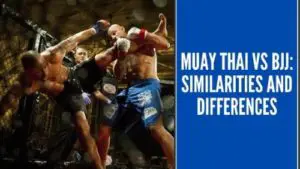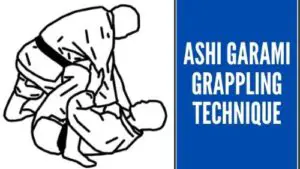Submission wrestling is a combat martial arts sport. Also known as sport grappling or combat wrestling, the sport involves ground fighting and clinching to obtain submissions through submission holds.
Submission fighting is referred to as no-gi jiu-jitsu style, in Japan, since it does not incorporate the use of gi fighting style.
Unlike other wrestling styles, submission fighting involves the use of joint locks such as wrist locks and heel locks.
The wrestlers usually wear shorts and skin sticky clothing such as speedos and rash guards to avoid tearing and being ripped off during combat.
This style combines a variety of other techniques from various martial art sports. Submission wrestling is well associated with mixed martial arts sports.
History of Submission Wrestling
Over the years, different regions in the world have practiced various forms of submission wrestling style. Erick Paulson studied and trained a variety of martial art styles in the late mid-1970s.
He later infused most of the techniques into the combat he taught. Submission wrestling developed from this infusion. The fighting style has evolved and grown in popularity in recent years.
Viktor Spiridonov and Vasili Oschepkov developed the Sambo wrestling style by merging their wrestling styles.
Focuses more on the hand to hand combat skills hence used as a self-defense technique. Typically, this technique does not use gi pants but instead uses a jacket to grip the opponent and utilizes leg locks. This technique was recognized as the third style of international wrestling by FILA in 1985.
Gokor Chivichyan and Gene Lebell developed a grappling submission style known as Hayastan freestyle fighting; with the fighting style incorporating various techniques from judo, sambo, catch wrestling and freestyle wrestling.
Brazilian Jiu-Jitsu evolved from Japanese Jiu-Jitsu during the early 19th century. The style involves throws but mainly focuses on ground fighting, and submission holds.
Traditionally, wrestlers can practice this style with or without the gi. The lack of gi means that the participants need to use the other wrestling techniques to bring down their opponents.
Catch wrestling is considered the purest technique used in submission wrestling. The style first originated in Nothern England. This technique has developed and incorporates the use of submission holds and hooks.
Popularly referred to as catch-as-catch-can, one should catch a submission hold whenever possible, making it have a significant influence on wrestling sports such as MMA and WWE.
Euclydes developed a Brazilian martial art, Lutra Livre, which evolved from a combination of catch wrestling and judo. Spot Version and Vale Tudo are two versions of this style. Spot version has a striking resemblance to catch wrestling as it encourages the use of holds and submissions to take out opponents, whereas the later incorporates the use of kicks and punches.
Karl Gotch who came up with the shoot wrestling, the Japanese version of Catch wrestling, developed the style using the submission technique, which impressed people, and he began teaching it in Japan.
Hidetaka Aso, a former Sambo World Champion, created another Japanese version of submission fighting known as Submission Arts Wrestling. Initially practiced in Japan, the style has spread to Canada, Puerto Rico, and now Australia.
This style mainly focuses on the grappling technique considering principles governing Judo and Sambo. Lack of the gi technique in this sport gives room to explore a variety of choke techniques.
The popularity of Submission Wrestling
Submission wrestling has grown in popularity over the years since it forms a broad skillset basis for MMA fighting. Most successful MMA fighters e.g., Conor Mc Gregor, have had some base in submission grappling techniques.
The popularity of the MMA fight earns submission wrestling recognition as an active combat sport. Some of these techniques in MMA fighting borrowed from submission wrestling have bans in other martial arts sporting competitions.
Different organizations are governing the sport and tournaments held to promote it. An organization such as United World Wrestling holds international competitions and sets rules and regulations.
Organizations such as Grappers Quest promote events on submission wrestling and also hold competitions of various divisions according to weight and age classes. These organizations support the sport of grappling, increasing its popularity.
The Abu Dhabi Combat Club is one of the most popular wrestling competition. The competition occurs after two years in different localities.
The original goal of setting up the tournament was to determine which submission technique was the best by organizing a tournament with fighters using various styles. Moreover, events such as Eddie Bravo’s EBI have defined guidelines on how to determine wins in submission wrestling tournaments.
Techniques of Submission Wrestling
The incorporation of various techniques results in a mixed martial arts style. Submission grappling involves multiple techniques.
Grappling involves the hand to hand combat to gain an advantage over the opponent or cause injury. Wrestling is a close-range sport, and this requires various techniques to put down your opponent.
Jiu-jitsu style, which is one of the techniques used in submission wrestling, is an ancient wrestling style. The style majorly involves joint locks, chokes, and throws.
This style is mainly defined by directing the opponent’s strength or momentum against him and applying it in the direction the one executing the technique prefers. The wrestlers use a gi but can train even without one.
Judo is a Japanese martial art technique also used in submission wrestling. This technique involves throws, pins, joint-locks, and even choking. Jigoro Kano, a moral pedagogy, created this wrestling technique. It has evolved over the years and incorporated as an Olympic sport in the category of mixed martial arts.
Malla-Yuddha originated from India and is one of the oldest forms of submission wrestling practiced to date.
This technique, named after legendary fighters and Hindu gods, focuses on the strategical positioning of a fighter compared to the opponent’s position. Wrestlers use locks, holds, and chokes to force the opponent to submit.
Many regions of the world today practice the submission wrestling style. The incorporation of this style in major wrestling competition has made it famous. Over the years, merging and integration of various fighting techniques have led to the development of new wrestling styles.







